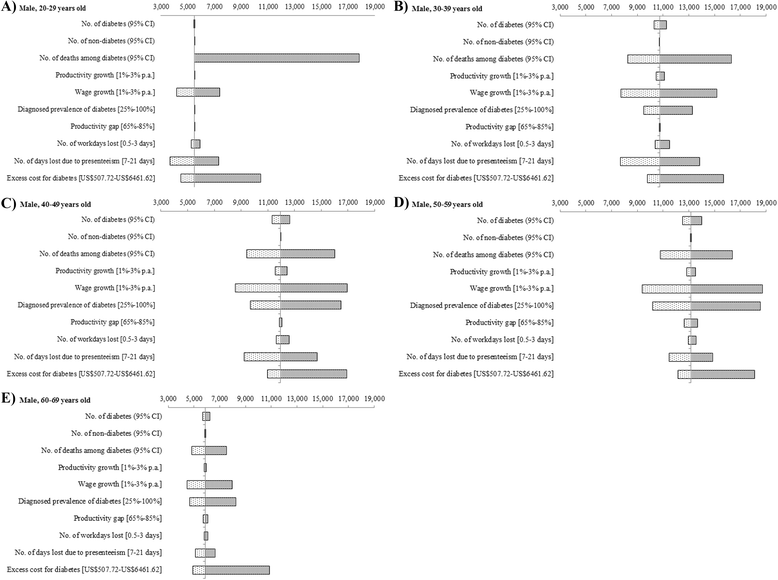Current and future economic burden of diabetes among working-age adults in Asia: conservative estimates for Singapore from 2010-2050
- PMID: 26880337
- PMCID: PMC4754926
- DOI: 10.1186/s12889-016-2827-1
Current and future economic burden of diabetes among working-age adults in Asia: conservative estimates for Singapore from 2010-2050
Erratum in
-
Erratum to: 'Current and future economic burden of diabetes among working-age adults in Asia: conservative estimates for Singapore from 2010-2050'.BMC Public Health. 2016 Jul 18;16(1):589. doi: 10.1186/s12889-016-3164-0. BMC Public Health. 2016. PMID: 27430212 Free PMC article. No abstract available.
Abstract
Background: Diabetes not only imposes a huge health burden but also a large economic burden worldwide. In the working-age population, cost of lost productivity can far exceed diabetes-related medical cost. In this study, we aimed to estimate the current and future indirect and excess direct costs of diagnosed type 2 diabetes among the working-age population in Singapore.
Methods: A previously-published epidemiological model of diabetes was adapted to forecast prevalence among working-age patients with diagnosed type 2 diabetes in the absence of interventions. The current methodology of the American Diabetes Association was adopted to estimate the costs of diabetes for this population. Diabetes-related excess direct medical costs were obtained from a local cost study while indirect costs were calculated using the human capital approach applied to local labor force statistics. These cost were estimated conservatively from a societal perspective on a per patient basis and projected to the overall Singapore population from 2010 to 2050.
Results: In 2010, total economic costs per working-age patient were estimated to be US$5,646 (US$4,432-US$10,612), of which 42% were excess direct medical costs and 58% indirect productivity-related losses. Total cost is projected to rise to US$7,791 (US$5,741-US$12,756) in 2050, with the share of indirect costs rising to 65%. Simultaneous increases in prevalence imply that the total economic costs of diabetes for the entire working-age population will increase by 2.4 fold from US$787 million in 2010 to US$1,867 million in 2050.
Conclusions: By current projections, diabetes in Singapore represents a growing economic burden. Among the working-age population, the impact of productivity loss will become increasingly significant. Prevention efforts to reduce overall prevalence should also engage stakeholders outside the health sector who ultimately bear the indirect burden of disease.
Figures


References
-
- González J. Cost-of-illness study of type 2 diabetes mellitus in Colombia. Rev Panam Salud Pública. 2009;26:55–63. - PubMed
-
- Palmer A, Roze S. The CORE Diabetes Model: projecting long-term clinical outcomes, costs and costeffectiveness of interventions in diabetes mellitus (types 1 and 2) to support clinical and reimbursement decision-making. Curr Med Res Opin. 2004;20(Suppl 1):S5–26. doi: 10.1185/030079904X1980. - DOI - PubMed
Publication types
MeSH terms
LinkOut - more resources
Full Text Sources
Other Literature Sources
Medical

